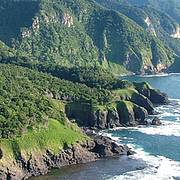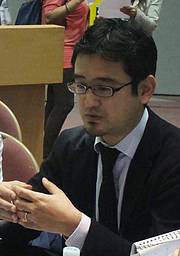Acting on lessons from the tsunami: Japan plans new national park
08 September 2012 | Audio
Come 2013 the government of Japan will establish a new national park along areas heavily affected by the 2011 tsunami; a bold pursuit to invest in natural barriers against future natural hazards. This and more are the lessons and steps the government of Japan and its partners are sharing at the 2012 IUCN World Conservation Congress.
Though the total land area of the new Sanriku Fukku (reconstruction) National Park is not known at this stage Keisuke Takahashi, the Assistant Director of the National Park Division at Japan's Ministry of Environment says that the park will encompass a few other existing natural parks such as the Rikuchu Kaigan Natural Park.
This move by the government is part of its Green Reconstruction Project which aims to promote the wise use of natural resources, learning of threats to and from nature and strengthening of the connection between the people and nature.
"Nature can give many blessings, and it can also threaten us," said Takahashi at a sharing lessons event at the 2012 IUCN World Conservation Congress in Jeju, Korea. "In order to prepare for future disasters we need to pay more attention to nature and its own powers of recovery."
The people of Japan are deeply connected to nature culturally and this new park will provide a unique opportunity to reinvigorate a sense of pride in nature and conservation whilst also opening doors for employment through ecotourism and education.
Another innovative step for nature proposed and promoted at the congress by Masanori Kobayashi, Associate Professor at Yokohama National University in Japan is the Green Dyke Initiative. This is a reforestation initiative which couples waste disposal.
Basically the green dyke is a soil mound of about 5m in depth, covering debris, with trees (preferably ever-green species) planted on the top of the mound. It is a different approach to the grey dyke, which uses concrete instead of soil.
Kobayashi believes that the green dyke will help solve the immense debris problem left behind by the tsunami.
The initiative has several benefits including green house gas reductions and trials have been successful.
"The green dyke is cost effective and can provide some protection for the people against tsunamis," adds Kobayashi.
This idea however is still fairly new to most of the local people and many opinion differences are surfacing. But Kobayashi is optimistic that participatory, nature-based solutions such as this can be a model for reconstruction.
Nature-based solutions to climate change is one of the themes of discussions at the IUCN World Conservation Congress.
See the full programme of events at http://events.iucn.org/wcc2012/official_programme




